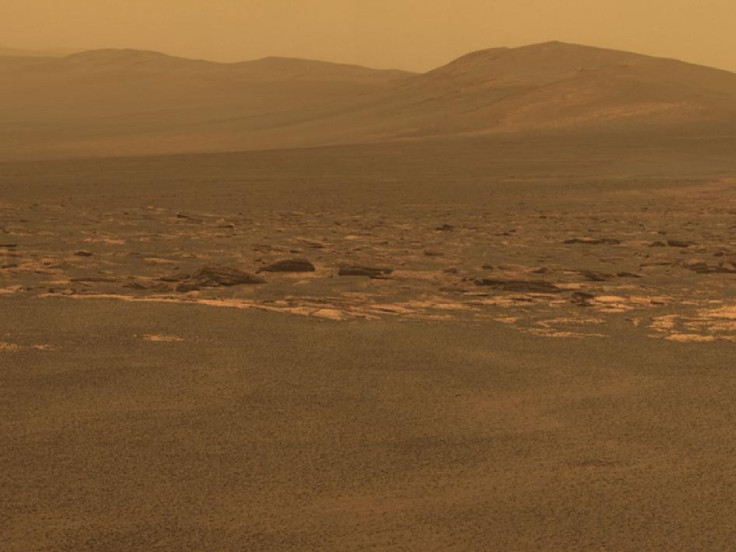Alien Life May be Discovered by Dramatically Improved Devices - Scientists

Alien life stands a far better chance of being discovered thanks to vastly improved scientific detection devices, according scientists meeting this week in Denver.
Discussions of heightened chances for finding signs of extra-terrestrial life follows recently discovered evidence of flowing salt water on Mars. That evidence, which shows salt water descending from rocky slopes, picqued the interest of scientists attending this week's American Chemical Society (ACS) conference.
The bottom line is that if life is out there, the high-tech tools of chemistry will find it sooner or later, said Jeffrey Bada, Ph.D., co-organizer of a special two-day symposium on the Red Planet at the 242nd National Meeting & Exposition of the ACS. It certainly is starting to look like there may be something alive out there somewhere, with Mars being the most accessible place to search, Bada added.
The symposium included more than two dozen presentations by experts concerned with whether life exists, or existed, on Mars.
One reason that the questions linger is that they haven't had the right instruments, said Bada, a noted authority on the topic at the Scripps Institution of Oceanography at the University of California-San Diego. We have the instruments now or are in the process of developing and refining them. The challenge is getting them onboard future spacecraft, knowing what kinds of compounds to look for and knowing exactly where to look.
Bada is a strong advocate for postponing future manned missions to Mars until the unmanned missions get enough information to land astronauts in an area most hospitable to life. He expressed concern, however, that NASA budget cuts could jeopardize such future unmanned missions.
One forthcoming unmanned mission is the new Mars Science Laboratory rover, called Curiosity, scheduled for launch in November. The $2.5 billion nuclear-powered machine will land on Mars' surface with a suite of 10 science instruments to try to determine if conditions are favorable for life. Another key Mars mission is scheduled for 2016. Called the ExoMars Trace Gas Orbiter, it will carry five science instruments and will study gases in Mars' atmosphere, including methane, for evidence of biological or geological activity. It is a joint mission of the European Space Agency and NASA.
The instruments on that atmospheric mission have a factor of 100 to 1,000 increase in sensitivity over what is currently available from Mars orbiters or from ground observations, noted symposium co-organizer Mark Allen, Ph.D., who is the U.S. project scientist for the 2016 Mars mission. He is with the Jet Propulsion Laboratory at the California Institute of Technology in Pasadena.
Among the most important instruments flown onboard future missions will be those that can detect organic nitrogen, Bada said. Nitrogen is essential for life on Earth. Scientists are convinced that if there's life on Mars, it will contain nitrogen.
Scientists also should look for signs of life deep underneath Mars' surface, Bada said. He noted that powerful ultraviolet and cosmic rays have bombarded the planet's surface for billions of years, likely destroying organic matter so that traces of these materials are no longer detectable. But studies suggest that organic materials buried beneath the surface of Mars, perhaps a meter or so deep, may somehow be protected against this radiation.
Researchers are also planning to use high-tech instruments to search Mars' atmosphere for signs of life. Among the substances they'll be searching for in the future is methane, the largest component of natural gas. NASA scientists have reported that Mars appears to be emitting plumes of methane on parts of the planet. If so, scientists suggest that the possible sources include bacteria and other organisms.
© Copyright IBTimes 2025. All rights reserved.






















